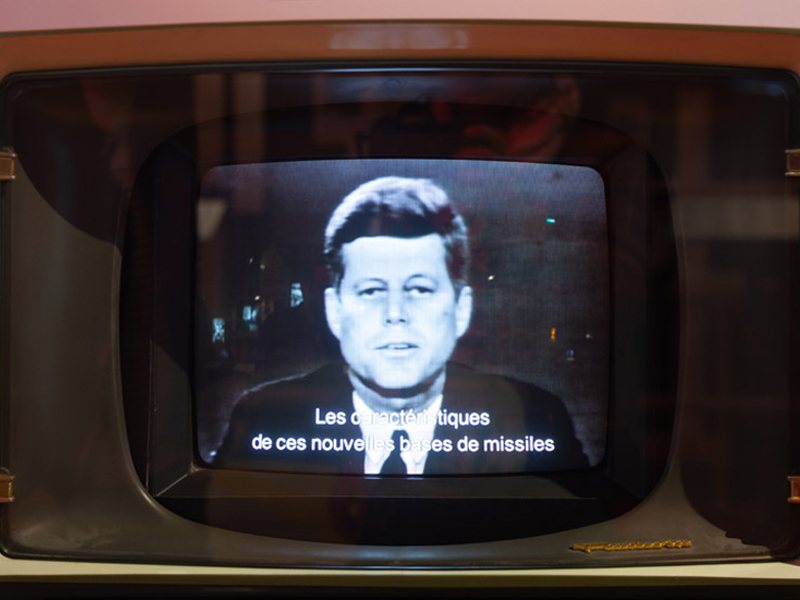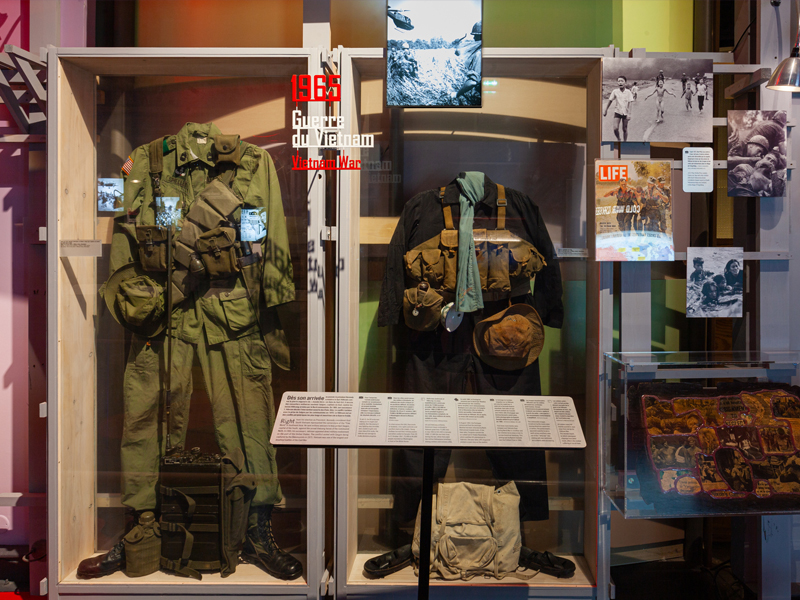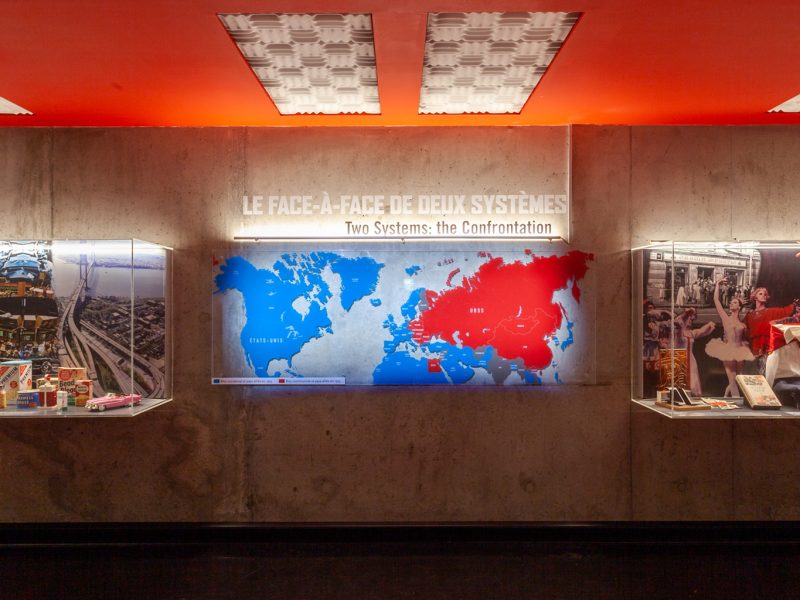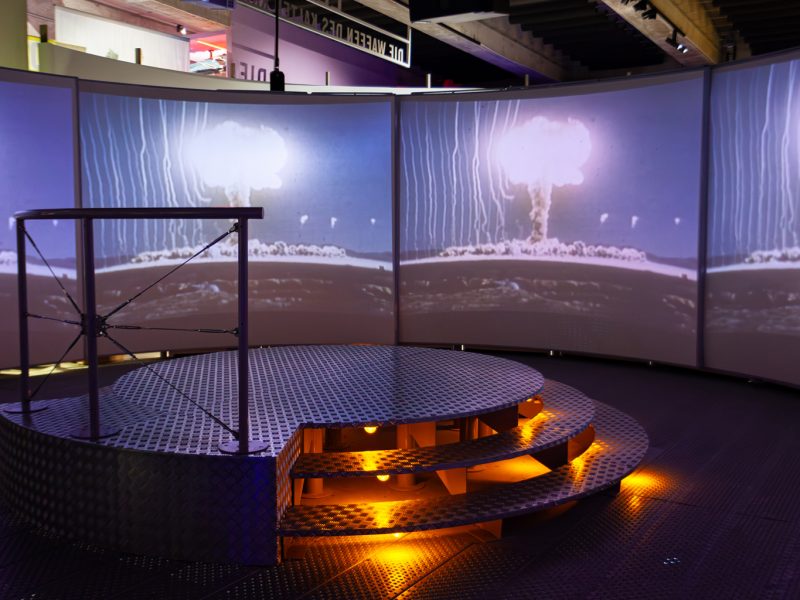This major conflict, certainly the deadliest of the Cold War, which erupted between the US and North Vietnamese forces is presented through a mural showcase exhibiting the uniforms of two fighters: the heavily equipped one of an American GI and the lighter, simpler one of a Vietcong soldier, complete with rubber sandals.
Through shocking images, an archive film reminds visitors of the key moments in this 16-year war, which ended in 1975 with the fall of Saigon and the victory of the Communists.
Photographs, maps, films, and soundtracks bring the defining moments of this period to life, while the walls of pulleys, gears, and chains recall the relentless spiral of the war between the blocks.



